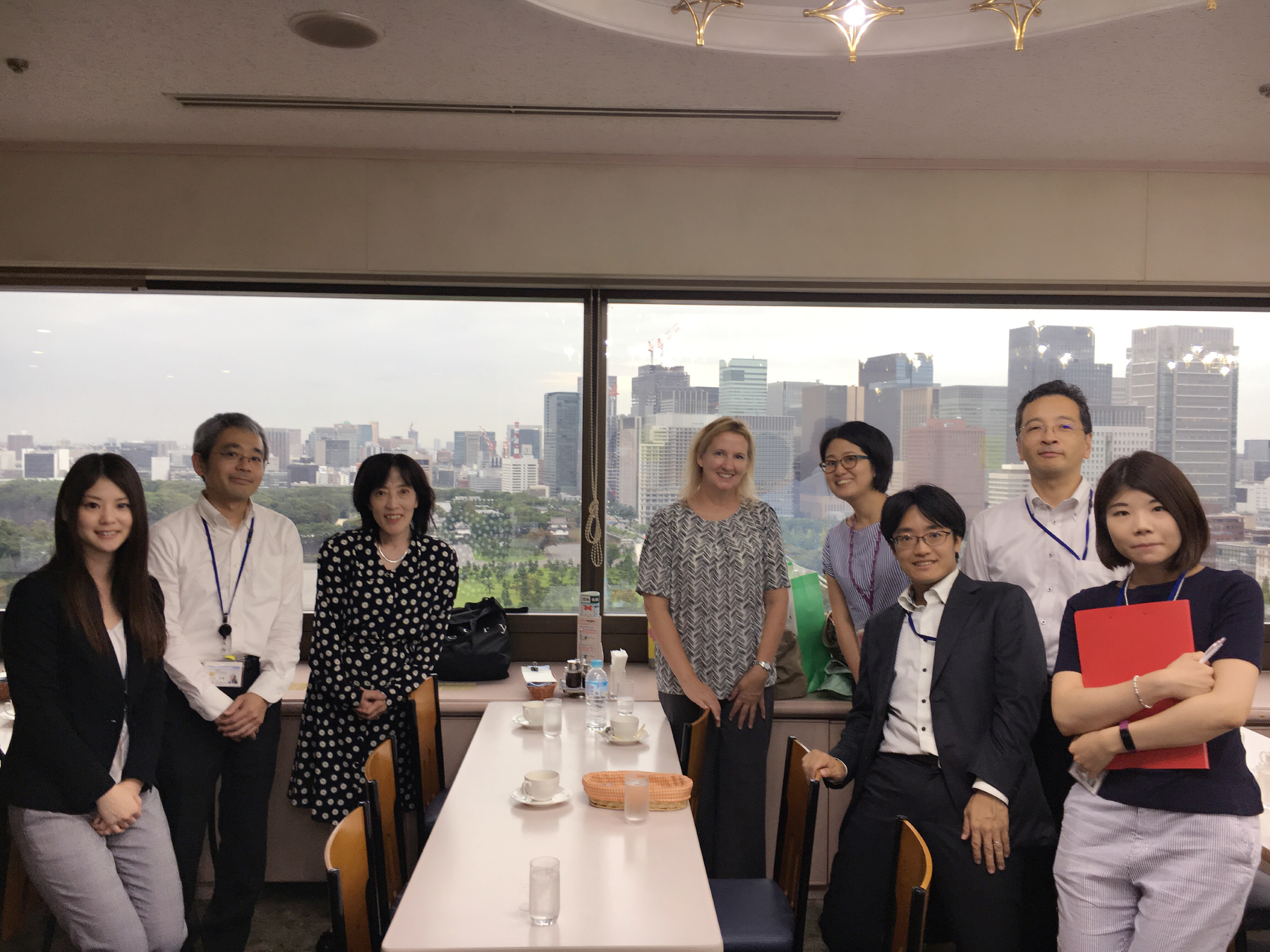Working with young people to give them a second chance can look different in the United States and Japan, according to Associate Professor of Criminal Justice Joanne Savage.
Savage visited Japan as part of her research comparing juvenile justice in that famously low-crime nation and the United States. “There is a more integrated, and what you might call relaxed, approach in Japan,” said Savage. “You can attribute a lot of that to the culture of the country, but there is also a drive to have juvenile delinquents and adult criminals become part of society, rather than a drive to punish them.”
Centers for young offenders are often referred to as “training schools.” Savage said that while youth prisons in the United States are strenuously criticized for their failure to educate, youth centers in Japan live up to the name. Savage toured a facility for serious juvenile offenders in Chiba Prefecture in the fall. “In Japan, there are many classrooms, some of which are filled with computers. The youth prison I visited had huge grounds and many recreational programs. It really does look like a school,” she said, before adding that facilities in both countries look fairly run-down.
The airy spaces of the large training school contrasted greatly with the look and feel of the Illinois Youth Center (IYC) in Chicago, which Savage and her counterpart, Professor Kyoko Hazama of Chiba University, also visited.
Housed in a former warehouse, IYC Chicago is part of the Youth Centers in Illinois system. Savage noted that though the centers strive to achieve the true mission of the juvenile justice system—to rehabilitate and reintegrate juvenile offenders—the legacy of punitive attitudes remains. “It became widespread during the ‘get tough on crime’ era in the U.S.,” said Savage, who noted that a tough stance can be seen in the facilities today with the lack of resources available for young offenders. When visiting IYC Chicago, Savage heard youth complain about the lack of basketballs. “And basketball is one of the only recreational activities they offer,” she said. “I am always surprised by how little time young offenders in detention or in juvenile prisons in the U.S. spend outdoors, and how the outdoor spaces are often confined and made of concrete and surrounded by high walls. That was not the case in Japan.”
Savage and Hazama also toured the Peoria juvenile detention center as well as area programs, such as the YWCA Labyrinth program for women transitioning into society after prison, and the Salvation Army’s Safe Harbor, a homeless shelter for families with programs that help some returning offenders. “Although there is a feel in both countries that there are not enough resources in facilities for offenders,” said Savage, “in the U.S. many of the resources are clearly devoted to security, while in Japan the resources are shared with other aspects of the facilities such as the education programs, staff psychologists, job training, and outdoor recreation.”
Savage said the juvenile system in Japan is geared more toward integrating young offenders back into society as well. “In the U.S., we say we want to rehabilitate offenders and almost everybody seems to know that locking up kids is a bad idea, but we can’t seem to get past our risk aversion—we don’t want to take a chance on letting offenders out if there is any chance they might commit a crime.” In contrast, Japan seems to have a higher level of trust in the individual and a belief that being part of society will help prevent future crimes. Savage attributes part of this to Japanese culture, which emphasizes strong bonds to family and society. “Any crime would bring great embarrassment for a family, and this is usually enough to deter people from breaking the law.” In that vein, the Japanese criminal justice system and juvenile justice system do not organize facilities to separate less-serious offenders from more serious or violent offenders. “When I asked why they were not separated, I was told that the minor offenders are a good influence on the others,” she said.
Savage and Hazama plan to publish the findings of their exchange, and continue their cross-continental collaboration. The work offers a new avenue for Savage, who has written on such topics as the long-term effects of neglect on violence, and the association between parental bonds and aggressive behavior.
“Americans do not realize how limiting their perceptions are when it comes to justice,” said Savage, who has also visited juvenile justice facilities and interviewed juvenile judges and prosecutors in Switzerland. “It’s good for us to open our eyes to what the rest of the world does.”



